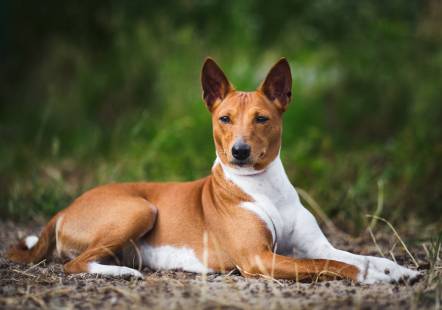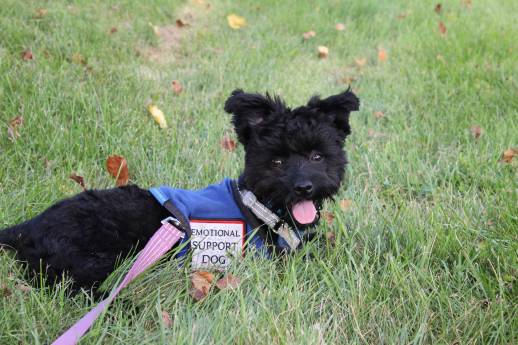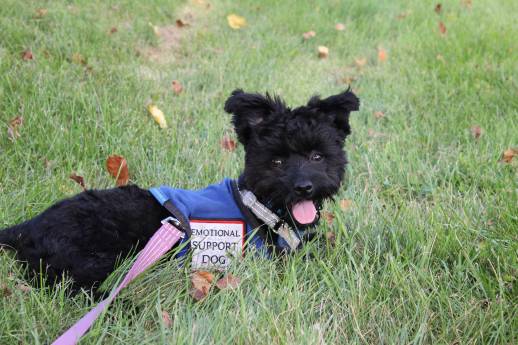An Emotional Support Animal is like a friend for someone who is disabled. It provides them with companionship and helps them to communicate with others. Animals that give someone with a disability companionship or animals that offer some type of support to assist in the lives of the disabled.
We help people get the proper documentation to make their pet an official Emotional Support Animal. Online approval in minutes - Housing & Travel letters.
Some airlines will allow a person to travel with their ESA if the animal is trained to sit in the passenger’s lap, or if the animal is large enough that it does not have to be placed in the seat. Airlines may also ask for medical records verifying that the patient has a mental health condition and needs an ESA.
Passengers traveling with an emotional support animal should keep these requirements in mind when planning for travel. The ability to travel with an emotional support animal can be beneficial for many people with psychiatric conditions, but only if they are able to properly take care of their ESA during their travels and ensure that it does not cause any problems for other passengers
Some Tips and Advices Flying With An Emotional Support Animal
1) Prepare the officials document
Be sure to include a government-issued document proving that you have authorized a guide dog to support you on a flight. Airlines can request this if you are flying more than 48 hours prior to when the flight departs.
2) Consider their breeds restrictions
Some airlines prohibit certain types and breeds of dogs or cats from traveling on their aircraft; so be sure to verify which airlines you travel with have restrictions. Airlines might ban certain breeds of dogs or cats from cabins or other areas of the plane to ensure the safety of both passengers and their pets.
3) Get a proof from a veterinarian showing the animal is safe to travel
Regardless if you are flying alone or with a traveling companion, some airlines will ask you for medical evidence that the animal is able to board the plane safely. Some airlines also require that you provide health records of your animal before allowing it to travel on a carrier.
We help people get the proper documentation to make their pet an official Emotional Support Animal. Online approval in minutes - Housing & Travel letters.
4) Pay attention to the weather conditions
If you take your Emotional Support Animal to accompany you on a flight, remember to check the temperature. If it’s very hot in the airport or very cold, you may be exposing yourself and/or your ESA to harm. It is also best to fly in the morning or evening when temperatures are lower and when temperatures are warmer (usually at midday).
5) Consider the destinations restrictions
Some airlines ban travelers with ESA who arrive at specific airports or destinations; they may not allow them to board a flight that is destined for such a destination.
6) Be aware with the size and age of ESA restrictions
Emotional Support Animal sizes and ages may affect the way in which you can take it, including how you’ll be transporting it. If you can’t fit your pet comfortably in a window seat, or if it’s not allowed in a cabin, some airlines may not allow you to bring it aboard. These policies may vary from airline to airline, depending on the airline, your location and the type of animal you are transporting. You must first make arrangements with each airline you fly with to be certain your pet is permitted in its cabin.

Julie
Julie is a graduate of the University of North Carolina, Wilmington, where she studied Animal science. Though contrary to the opinion of her parents she was meant to study pharmacy, but she was in love with animals especially cats. Julie currently works in an animal research institute (NGO) in California and loves spending quality time with her little cat. She has the passion for making research about animals, how they survive, their way of life among others and publishes it. Julie is also happily married with two kids.
Review symptoms, medications & behavior to keep your pets healthy with a Vet Online in just minutes.
Ask a Vet Live Now




